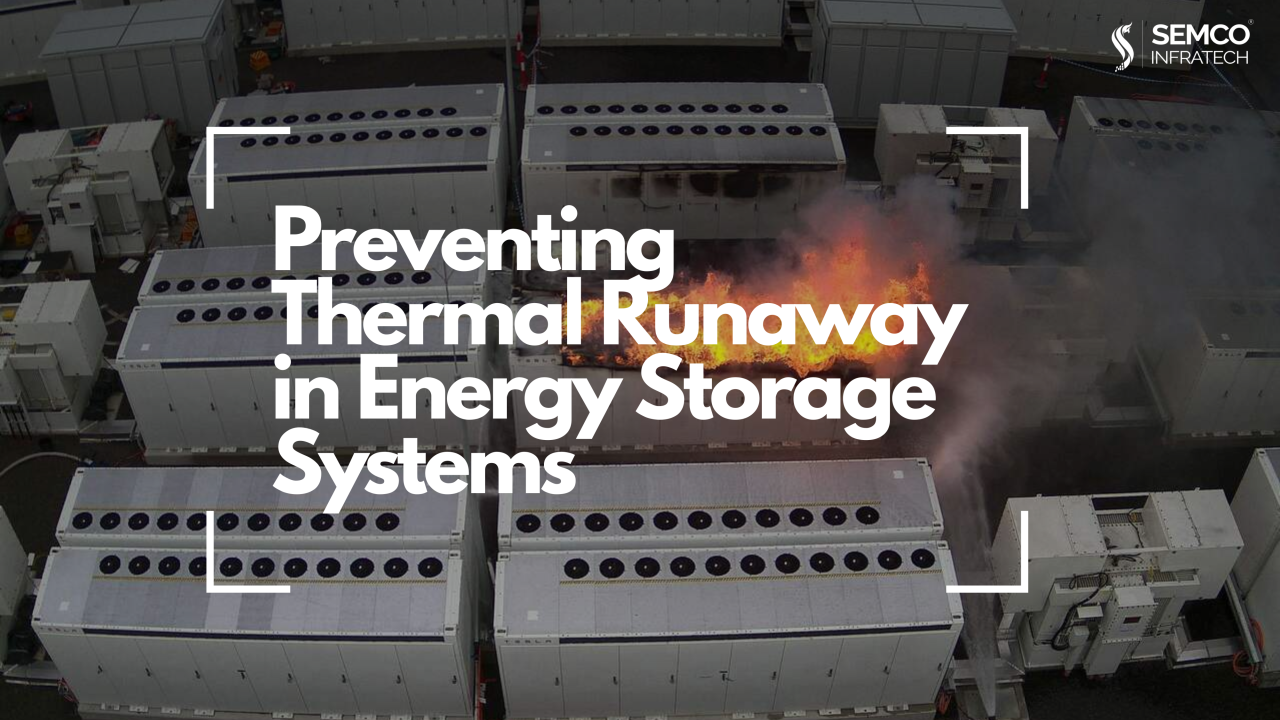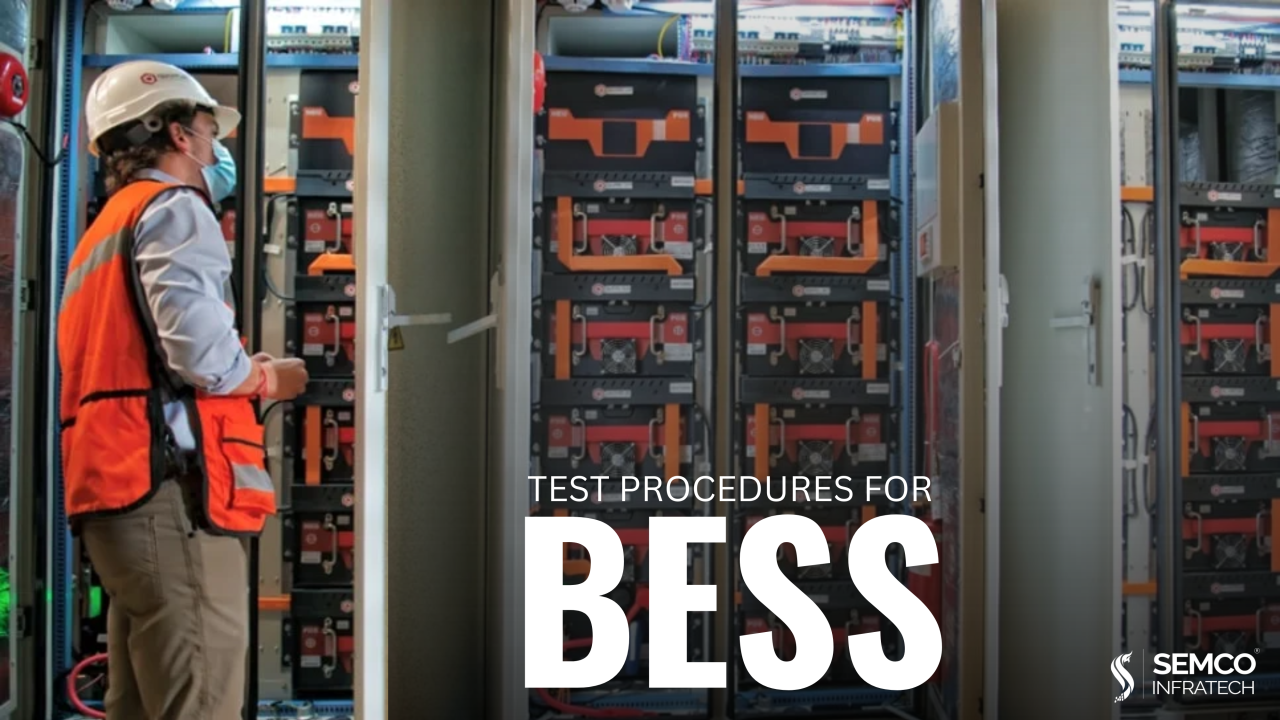As the world transitions towards a more sustainable energy future, large-scale energy storage power stations are becoming indispensable for maintaining grid stability and balancing supply and demand. However, these powerful installations, often housing battery packs with capacities reaching mega-watt-hour levels within a single cluster, present a unique challenge: the risk of thermal runaway.
When an event of thermal runaway occurs in such a large-capacity battery system, it can trigger devastating consequences, including widespread fires, grid disturbances, and even pose significant risks to personnel. The underlying issue is that the very nature of modern energy storage batteries—their high energy density, the immense number of individual cells within a pack, and the demanding, often complex operating environments—magnifies the risk of thermal runaway, making vigilance hundreds or even thousands of times more critical than with smaller battery applications.
The Five Stages of Thermal Runaway: From Subtle Signals to Catastrophe
Thermal runaway in energy storage batteries is not an instantaneous event but rather a progression through distinct stages, akin to a creeping ailment that culminates in a sudden crisis. Understanding these phases is crucial for effective prevention and mitigation.
Phase 1: Accumulation of Triggers – Chronic Damage Lays the Foundation
This initial phase involves the gradual degradation of battery cells due to various operational stresses, setting the stage for potential future issues. These “trigger conditions” are particularly relevant to energy storage scenarios:
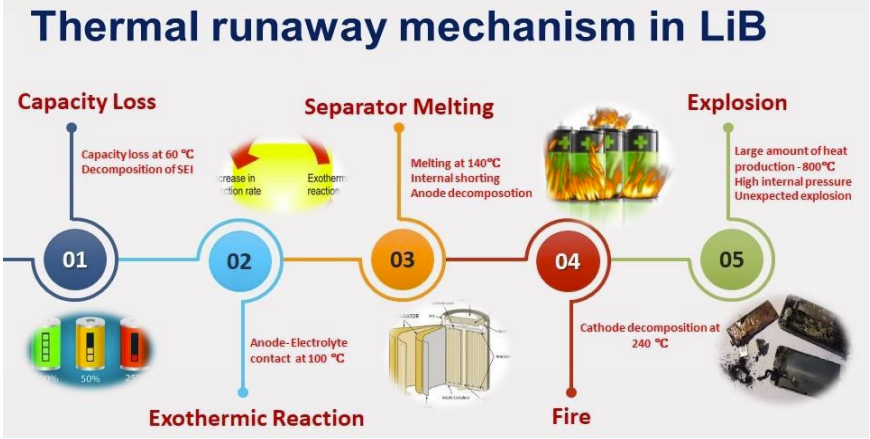
- Intensive Charge and Discharge Cycles: Energy storage systems frequently undergo daily charge and discharge cycles, for instance, to manage grid fluctuations. Over extended periods, this rigorous use can lead to microscopic cracks forming in the crystal lattice of the positive electrode material. Concurrently, decomposition products from the electrolyte can accumulate, contributing to a steady increase in internal resistance. Over the long term, this internal resistance can rise by a significant percentage annually.
- Consistency Imbalance: In a large battery pack, maintaining perfect consistency across all individual cells is challenging. When there are noticeable differences in capacity among cells, some cells may experience overcharging or over-discharging even if the overall pack voltage appears normal. This localized stress leads to aggravated heat generation in those specific cells.
- Thermal Management System Malfunction: The sophisticated thermal management systems designed to regulate battery temperature are vital. If components like liquid cooling pipes become obstructed (perhaps due to impurity precipitation), it can lead to excessive temperature differences within a single battery cluster. Similarly, a failure in the air conditioning system could result in the battery enclosure experiencing prolonged periods of elevated temperatures. Such thermal stressors accelerate the undesirable thickening of the Solid Electrolyte Interphase (SEI) film, a protective layer on the negative electrode.
Early Signals: During this phase, the battery management system (BMS) may issue early warnings, such as “single cluster voltage abnormality” or “temperature difference exceeds limit” alarms. Infrared thermal imaging scans might also reveal that the temperature of certain localized battery cells is a few degrees higher than the average temperature of the pack, providing subtle but crucial indicators of brewing trouble.
Phase 2: Initial Exothermic Reaction – The Runaway Ignition Switch
This stage marks a critical transition, where the battery cell’s temperature surpasses a dangerous threshold, initiating irreversible chemical reactions that generate their own heat, creating a runaway effect. For typical battery chemistries, this critical temperature might be around 180 degrees for one common type and approximately 150 degrees for another common type.
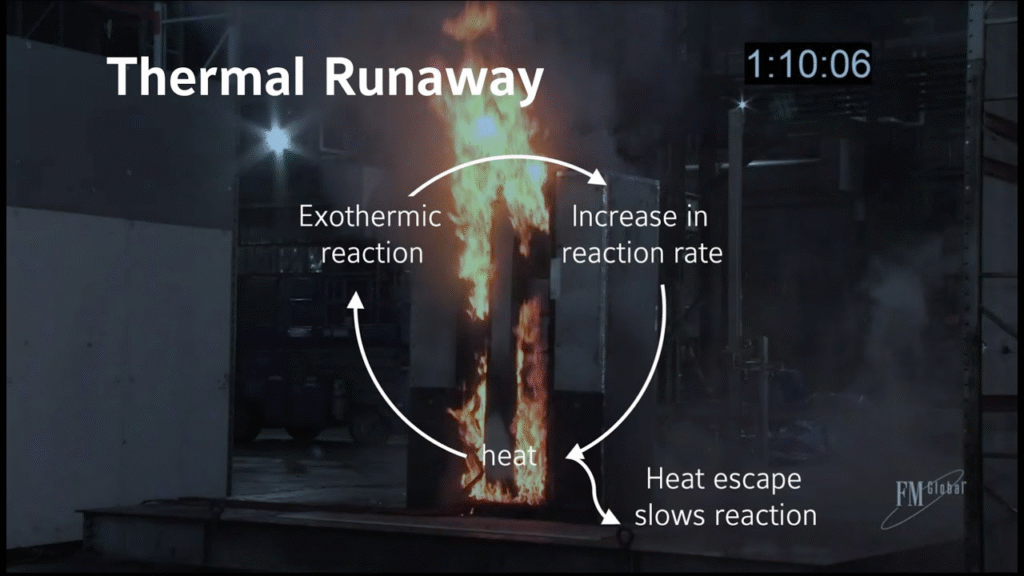
At this point, three types of irreversible reactions commence:
- SEI Film Decomposition: The protective film on the negative electrode surface begins to break down. This process releases gases and consumes lithium ions, leading to a noticeable drop in the battery’s capacity.
- Electrolyte Oxidation: The organic solvent in the electrolyte comes into direct contact with the positive electrode, resulting in the generation of corrosive gases. An increase in the concentration of these gases can be detected within the battery compartment.
- Positive Electrode Micro-Decomposition: The positive electrode material starts to release oxygen, providing a crucial oxygen-supporting agent for subsequent combustion if the process continues unchecked. For some battery chemistries, this oxygen release begins earlier than for others.
Physical Changes: Concurrently, observable physical changes occur. The battery cell may expand notably, causing its casing to bulge. The safety valve might open slightly, releasing a small amount of gas, which can be detected by fluctuations in the cabin pressure sensor.
Phase 3: Accelerated Heat Diffusion – Single Cell Failure Escalates to Cluster-Level Crisis
Once a single battery cell enters thermal runaway, the generated heat rapidly propagates to adjacent cells, creating a dangerous “domino effect.” This heat transfer occurs through various pathways, including thermally conductive adhesives, copper busbars, and the surrounding air.
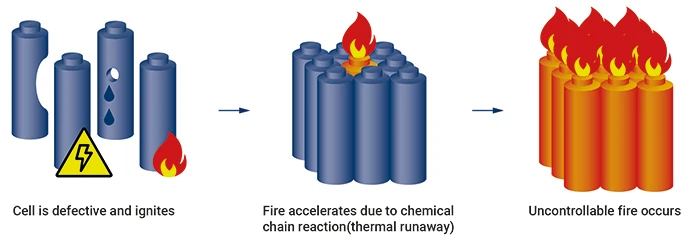
- Temperature Difference Drive: A significant temperature difference between adjacent battery cells drastically accelerates the rate of heat conduction. Even a moderate temperature differential can cause heat to spread rapidly, potentially affecting multiple nearby cells within a matter of seconds.
- Electrical Connection Enlargement: A more perilous aspect is the electrical interaction between cells. When a faulty cell’s voltage abruptly drops, healthy cells connected in parallel can discharge into it, generating additional Joule heat. This exacerbates the overheating in the failing cell and contributes to the rapid spread of thermal distress.
- Gas Interlock: The gases released by the initial runaway cell, particularly combustible ones, mix with electrolyte vapor within the enclosed cabin. This mixture forms an explosive atmosphere that can ignite violently if it reaches a specific concentration and encounters an ignition source.
Key Phenomenon: At this stage, the battery cluster monitoring screen will display “multiple battery cell temperatures exceeding a critical threshold,” indicating widespread heating. Operators may also hear a distinct “hissing” sound from the cabin, signaling gas release, and a slight white mist (electrolyte vapor) may become visible on surveillance cameras.
Stage 4: Uncontrolled Explosion – The Fatal Moment of Energy Storage Power Stations
When the temperature within the affected cells surpasses an even higher critical threshold (e.g., 250 degrees for one common battery type or 200 degrees for another), the event progresses to an irreversible deflagration stage.
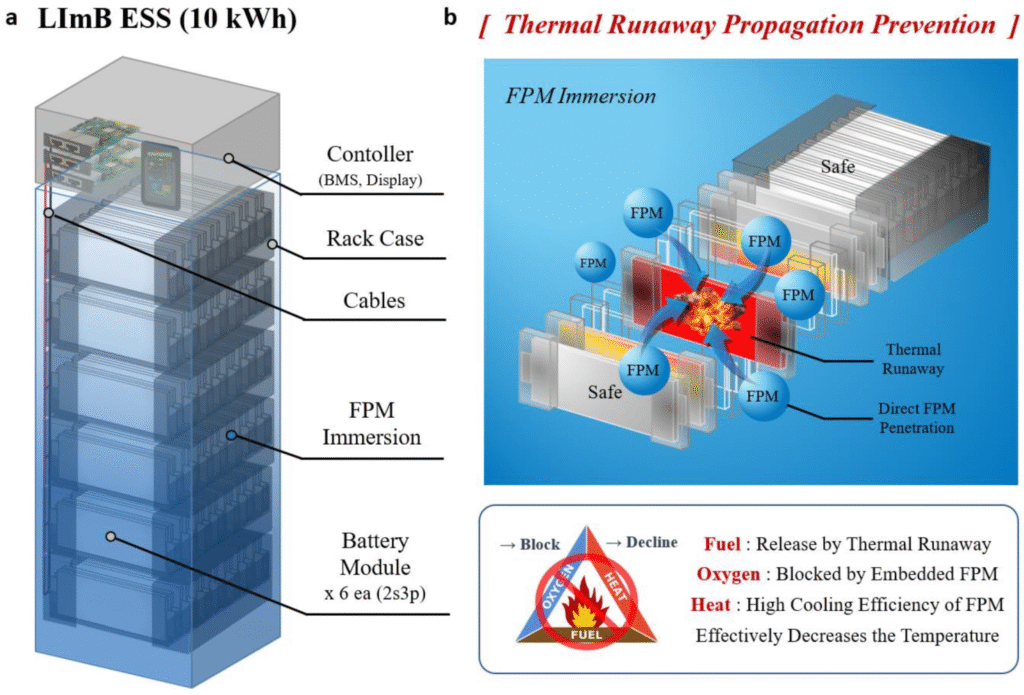
- Violent Decomposition of the Positive Electrode: The internal structure of the positive electrode material collapses violently, releasing a large volume of oxygen and significant heat. This oxygen then mixes with the electrolyte vapor, leading to intense combustion. For some battery chemistries, this oxygen release can occur at a rate three times faster than others and may be accompanied by the melting of internal metal components.
- Structural Damage: The battery’s explosion-proof valve opens fully due to extreme internal pressure, ejecting high-temperature electrolyte, which instantly ignites upon contact with air, forming a “tongue of fire.” The battery shell deforms drastically, and the positive and negative poles may short-circuit, generating instantaneous, massive currents and localized temperatures soaring to extremely high levels.
- System-Level Disaster: Heat rapidly transfers to adjacent battery clusters through cables and air-conditioning ducts, potentially spreading to the entire battery compartment within a very short timeframe. This triggers the activation of the fire-fighting system, but at this critical juncture, the cooling efficiency of such systems is often overwhelmed by the immense rate of heat generation.
Typical Case: A recent incident at an energy storage power station highlighted this rapid escalation: it took only a little over two minutes from the initial battery cell alarm to the full cabin explosion. Surveillance footage revealed a swift transition from white smoke to intense orange flames, accompanied by multiple concussive blasts.
Phase 5: Post-Disaster Spread and Rescue Difficulties
Even after the initial explosion or fire, the danger persists, posing significant challenges for recovery and safety.

- Resurgence Risk: The products generated by the combustion of battery materials, when they come into contact with water, can react to generate alkaline substances and release additional heat. This means that even if the visible flames are extinguished, reactions may continue inside the battery cells, leading to a significant risk of reignition within days after the initial thermal runaway event.
- Gas Threat: The combustion process produces highly hazardous gases, including corrosive and toxic substances. These gases accumulate within the enclosed battery compartment, potentially reaching concentrations far exceeding safe exposure thresholds, posing severe risks to emergency responders.
- Power Grid Shock: The sudden, emergency shutdown of the energy storage system’s power conversion equipment can cause significant frequency fluctuations across the electrical grid. Such disturbances can disrupt grid stability and potentially lead to widespread regional power outages.
Exclusive Thermal Runaway Causes: Three High-Risk Scenarios for Energy Storage Batteries
Beyond the general phases, energy storage batteries face specific high-risk scenarios that can uniquely trigger thermal runaway:
- Grid-Connected Dispatch Overload: In situations where there is a sudden and unexpected power deficit in the electrical grid, energy storage power stations may be commanded to discharge at rates significantly exceeding their rated power for extended periods. This forced overload can cause individual battery cell temperatures to rise substantially above normal operating limits, stressing the system and accelerating degradation.
- Fire Protection System Misjudgment: Early stages of thermal events might only produce smoke without immediately reaching a temperature threshold that triggers an automated sprinkler or suppression system. Missing this crucial early window—the precious few minutes before full-blown thermal runaway—can prevent effective intervention and allow the situation to escalate uncontrollably.
- Battery Management System (BMS) Blind Spots: In very large battery packs with hundreds of cells connected in series, a minor fault, such as poor contact in the voltage collection line of a single cell, can lead to a slight increase in electrical resistance. If the BMS fails to detect this subtle abnormality, that individual cell might become severely overcharged. This undetected overcharging can become a direct pathway to thermal runaway for that particular cell, initiating the entire destructive chain reaction.
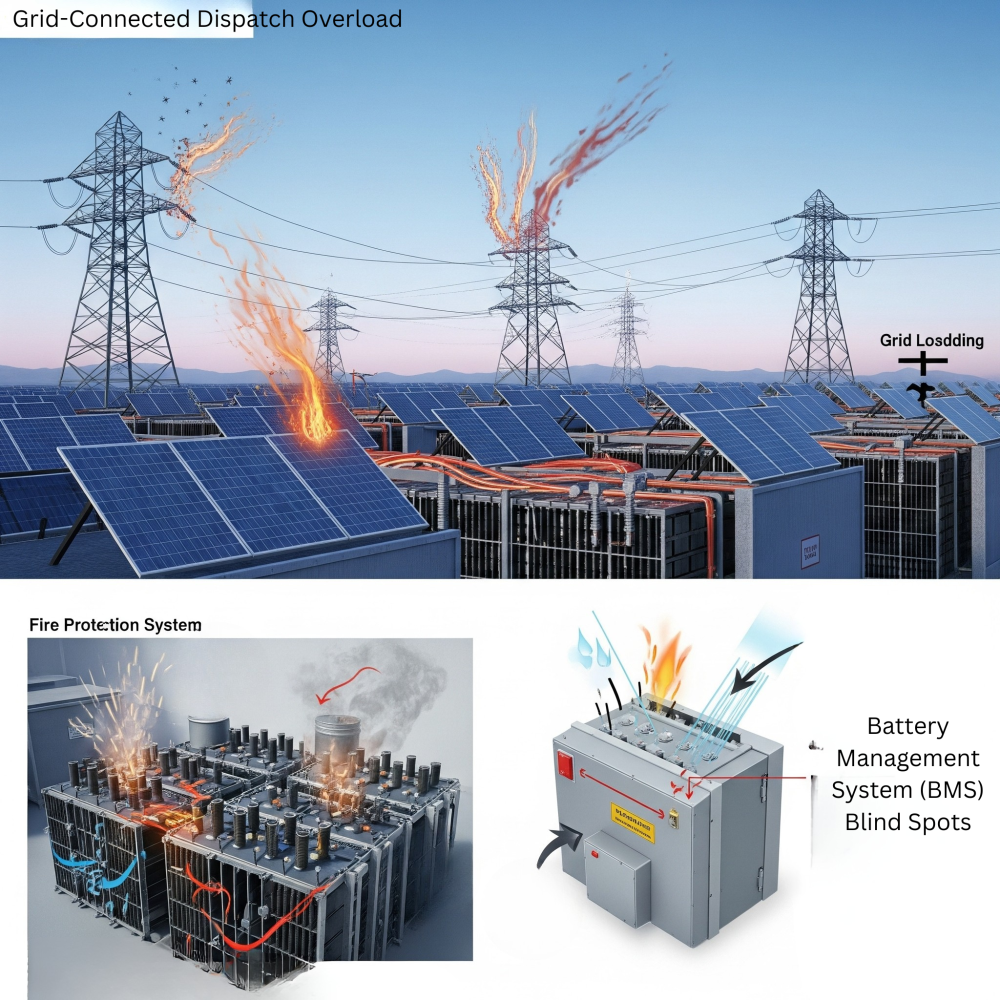
Proactive Measures: How Energy Storage Power Stations Can Prevent Problems Before They Occur
Mitigating the risk of thermal runaway requires a multi-layered approach, integrating advancements across hardware, software, and operational practices.
1. Hardware Layer: Building a Great Firewall of Protection
- Cell Level: Strategic choices at the fundamental cell level are paramount. Utilizing battery cells with higher thermal decomposition temperatures (e.g., those whose decomposition temperature is significantly higher than other common types) provides an inherent safety margin. Standardizing with ceramic separators, which can withstand very high temperatures, further enhances internal resistance to thermal events.
- Cluster Level: Between individual battery cells within a cluster, advanced insulation materials, such as aerogel insulation sheets, can be installed to slow down heat transfer effectively. Each battery cluster should also be equipped with an independent temperature sensor, providing highly accurate readings to promptly detect any localized overheating.
- Cabin Level: At the enclosure level, sophisticated detection and suppression systems are crucial. Rapid-response laser smoke sensors can detect initial smoke within seconds. These are often coupled with advanced suppression systems, such as those that spray specialized fire extinguishing agents, capable of rapidly reducing temperature within the cabin.
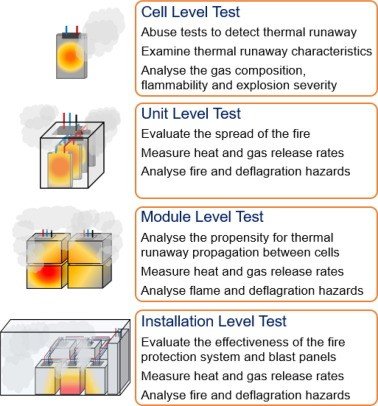
2. Software Layer: Intelligent Monitoring and Prediction
- AI Early Warning Model: Leveraging artificial intelligence, “thermal runaway probability algorithms” can be trained using extensive historical operational data. These models continuously analyze battery behavior and can trigger an automatic alarm if, for instance, the internal resistance growth rate of a single cluster exceeds a predefined monthly threshold, providing an early indication of impending issues.
- Active Balance Strategy: Implementing active cell balancing strategies is vital. This involves performing regular battery cell capacity balancing (e.g., every morning) to ensure that the capacity difference between cells is minimized. This proactive balancing prevents individual cells from becoming overcharged or over-discharged due to the “barrel effect,” where the weakest link dictates the performance of the whole.
3. Operation and Maintenance Layer: Full-Cycle Control
- Regular “Physical Examinations”: Consistent and thorough inspections are non-negotiable. This includes periodically testing the internal resistance of battery cells using specialized meters (e.g., quarterly). If the internal resistance increase exceeds a critical threshold, mandatory replacement of the affected cells is enforced. Annual thermal imaging scans, ensuring 100% coverage of the battery system, provide visual confirmation of thermal anomalies.
- Emergency Drills: Regular simulation of thermal runaway scenarios is essential for testing and refining emergency response protocols. These drills assess the response time of operation and maintenance personnel, emphasizing the critical need to disconnect the system from the grid within a very tight timeframe to contain potential incidents.
Conclusion: Energy Storage Safety Starts from the Small Things
Thermal runaway in energy storage batteries is not an unpredictable, sudden phenomenon but rather the concentrated culmination of long-term, underlying hidden dangers manifesting under specific operational conditions. From the subtle thickening of a single battery cell’s internal protective film to the catastrophic deflagration of an entire power station, there are numerous opportunities for early warning and intervention. For power station operators, the task of “preventing thermal runaway” is fundamentally a race against both “time” and “details.” Only by paying meticulous attention to every slight temperature increase and every minor voltage deviation can the last line of defense for energy storage safety be effectively maintained, ensuring the reliable and secure operation of these vital components of our future energy infrastructure.


